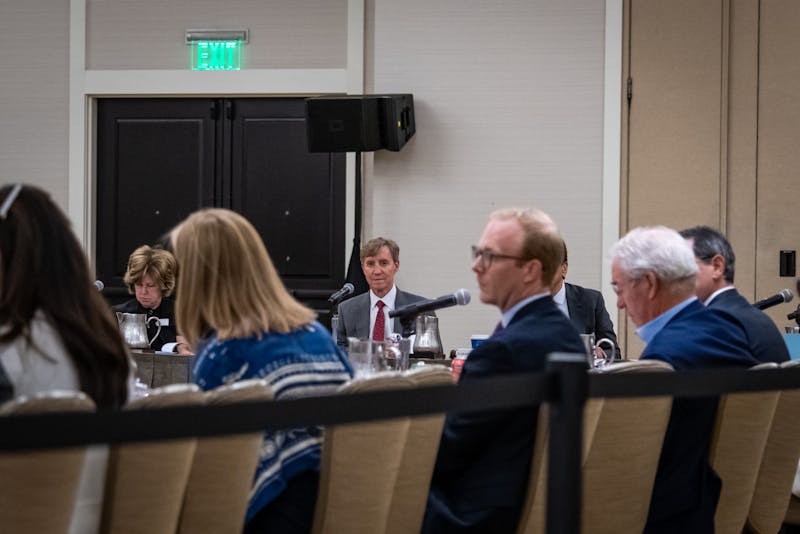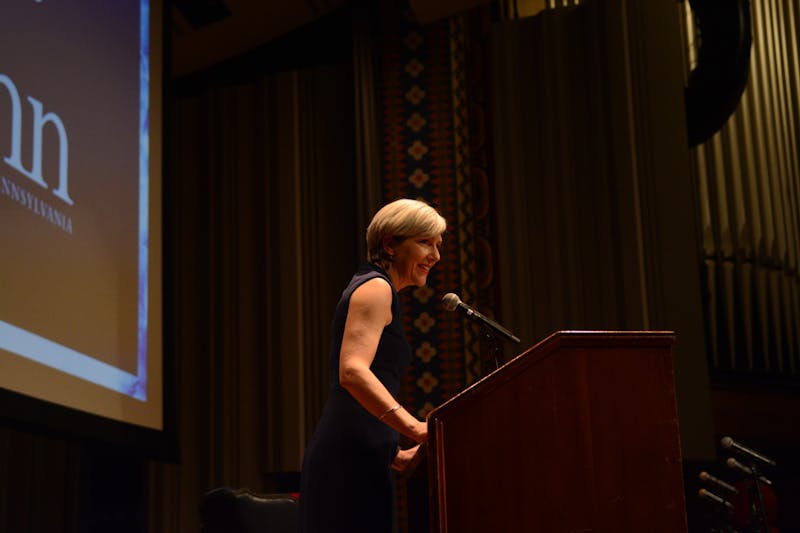Thirty years ago, there was no academic program at Penn to bring gender into academia. There was no central hub for women to congregate and seek counseling and support, and there were no services specifically devoted to women's security needs.
A campus once devoid of resources available to women has taken tremendous steps to increase women's resources since the early 1970s. The creation of the Women's Studies Program, the Penn Women's Center and the Special Services Department have helped give women a voice in academia and a larger presence on campus. But the road to the creation of these resources was a bumpy one at best.
Women's Studies Program Co-Director Demie Kurz remembers a time when there was only one shelf in the entire Penn Bookstore devoted to gender studies.
"Now they have to keep adding shelves," Kurz says. "Someone once told me that you can always tell which courses are in Women's Studies because the books are on the floor."
In 1972, two members of the feminist group, Women for Equal Opportunity at the University of Pennsylvania, proposed the creation of a separate Department for Female Studies.
Despite the efforts of the petitioners, the University did very little to act on the initial proposal. This, and a rash of rapes on campus in early 1973, led women at Penn to take matters into their own hands.
In April 1973, the group staged a sit-in at College Hall to protest the University's unwillingness to act on students' demands. Former American Civilization Professor Drew Faust, a graduate student at Penn during the sit-in, and remembers the time leading up to the protest as a period of anticipation, not conflict.
"It was a sort of joyous protest," Faust says. "It wasn't an angry, confrontational protest."
Eventually, the University answered the wishes of the protesters and created a small program devoted specifically to women's studies.
Sociology Professor and former program director Janice Madden recalls being criticized for delving into such an experimental field.
"I was told when I was doing my research that it was a big mistake because it was too risky," Madden says. "It was more of a political statement at the beginning."
Over time, the number of female faculty members increased, the number of courses offered grew, and faculty from many different fields began to connect their courses with the program.
"We began to realize that it wasn't just about women," Kurz says. "You heard more talk about a gender system. It went from a March of Life topic to topics that were central to many fields."
When Elena DiLapi arrived at Penn in 1985 to become director of the Penn Women's Center, she was greeted by a much different Locust Walk.
"There was a lot of sexual harassment 16 years ago," DiLapi says. "Fraternity brothers used to hold up signs rating the women from one to 10 as they went to class."
The rapes on and around campus in the early 1970s led to intense concern about the safety and security of Penn women. So when Women for Equal Opportunity staged their sit-in, the University responded with the creation of the Penn Women's Center. Originally located in Logan Hall, the center served as a place where women felt free to express their emotions.
Over time, as the issues affecting women on campus evolved, the center broadened to include various forms of violence, rape and sexual harassment.
"I think that the way in which violence against women has emerged as a social problem has changed over the years," DiLapi says. "We've really tried to look at the ways we can support women's advancement."
In the early 1990s, frustrated students marched down Locust Walk and turned the annual Take Back the Night celebration into a rally supporting a stronger presence for women on campus. The University answered the call, and in 1996, the Women's Center moved to its current home right in the heart of Locust Walk.
"It was a very practical move for us, and it was also a symbolic move for the institution," DiLapi says.
Jennifer Richards, a College senior and president of Penn for Choice, says the Women's Center, the home of almost a dozen student groups, is an important place to have in the center of campus.
"It's a really homey atmosphere," Richards says. "It feels more like a living room. It's nice to have that presence there."
But DiLapi can still recall a time at Penn when the triangular path behind Steinberg Hall-Dietrich Hall was called "Rape Alley" due to its history of sexual assaults.
That nickname started dying out once the Special Services Department, a part of the Division of Public Safety, began working with University Police to prevent sensitive crimes, such as rape, provide aid for victims and work with victims families.
"We try to prevent people from being victimized," Vice President of Public Safety Maureen Rush says.
"We guarantee confidentiality," Director Patricia Brennan says. "Some people are really afraid to go to the police, and we are like a middle ground. We bring the police to them."
The department sees between 20 and 30 students each month -- 95 percent of them female.
"You're not going to get voicemail here," Brennan says. "You're going to get a real person."
The Daily Pennsylvanian is an independent, student-run newspaper. Please consider making a donation to support the coverage that shapes the University. Your generosity ensures a future of strong journalism at Penn.
DonatePlease note All comments are eligible for publication in The Daily Pennsylvanian.







